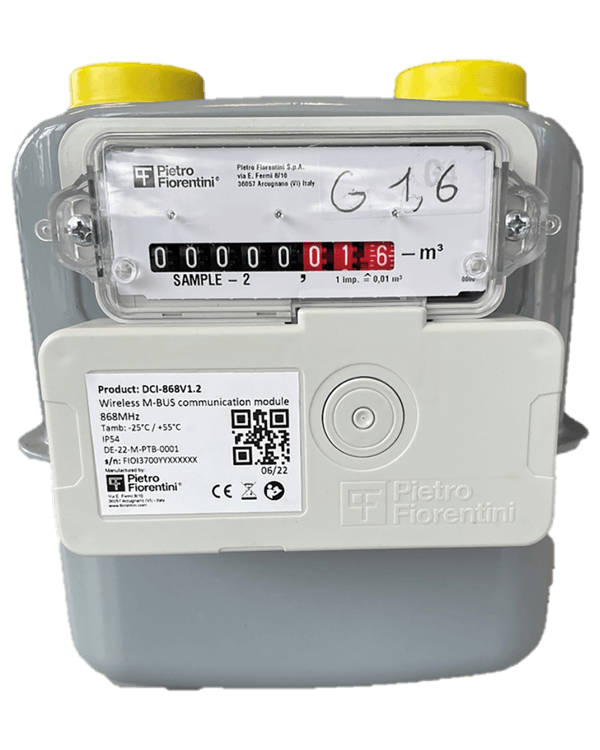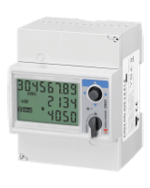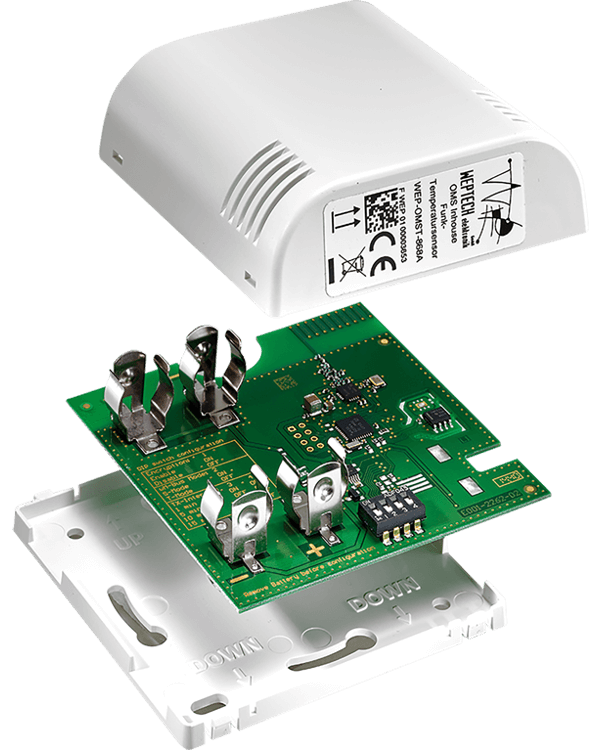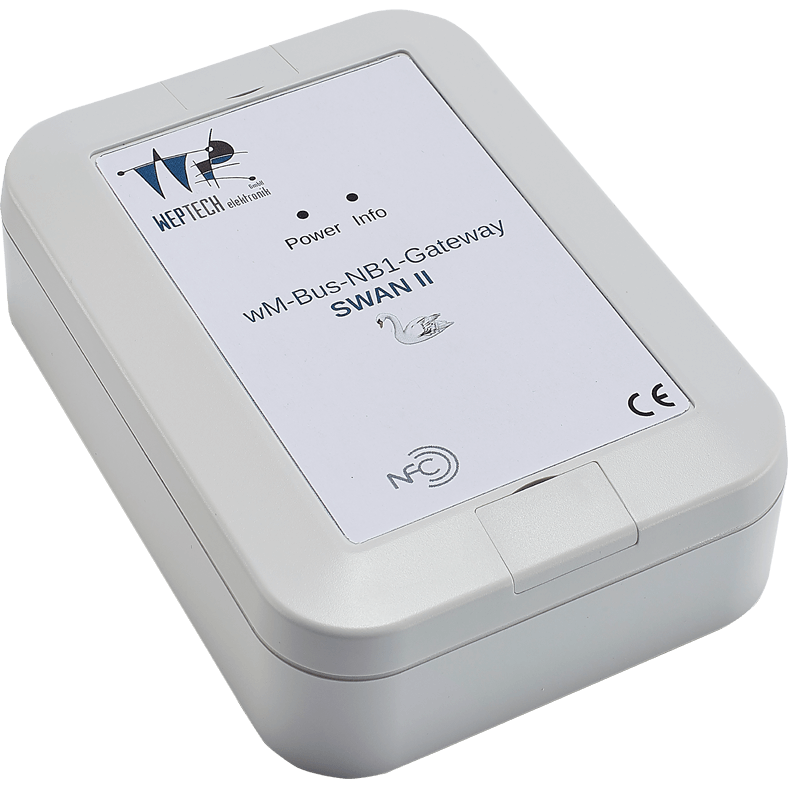WM-Bus/OMS solutions via LPWAN
Smart Meter Technology
Your partner in submetering
WEPTECH Elektronik
Collect data
adapter JONAH

adapter CHENOA

adapter ORIOL

adapter ORIOL
adapter

adapter
meter

adapter

adapter
ROBIN

MUNIA

MUNIA
Transmission via
wM Bus/ OMS
NB IoT
Gateway SWAN2

Transmission via NB IoT
UDP / https / LwM2M
IoT-
Cloud
Analyzing in cloud
wMBus
NB IoT
Collect data
Transmission via
wM Bus/ OMS
Transmission via NB IoT
UDP / https / LwM2M
Analyzing in cloud
Due to the OMS specification, which defines cross-manufacturer interoperability of all types of consumption meters, the OMS/wM-Bus protocol is the Europe-wide connecting element between meter, gateway and cloud platform and therefore also the set standard for all metering and submetering applications.
This enables flexibility and scalability in the implementation of the EU directive regarding the legally required installation of remotely readable meters. In addition, the OMS standard guarantees all market participants the necessary investment security in a future-oriented, digital technology due to the specified interoperability, regardless of the manufacturer.
Whereas in the past, meter data had to be read "manually" for billing purposes using a "walk-by/drive solution" with a mobile data collector, this effort is no longer necessary with the installation of the SWAN2 NB IoT Gateway. The gateway collects all assigned, encrypted OMS meter values via the wireless M-Bus interface and sends them to a cloud platform once a day via the NB IOT mobile network. Only in the cloud platform is the data then decoded and processed for further processing (analysis, billing).
The OMS standard allows all types of consumption meters to be integrated into an ecosystem via the radio-based (wireless) M-Bus protocol for remote reading. Not only electricity, gas, water and heat meters, but also additional sensors (CO2, temperature, humidity sensors, etc.) can communicate with the SWAN2 NB IoT Gateway via the wM-Bus protocol and thus securely transmit the meter data and measured values to any backend.
he SWAN2 NB IoT Gateway is battery-operated and has a robust, UV-resistant housing (IP 67). Commissioning and configuration on site can be carried out quickly and easily via the free configuration app from WEPTECH using the NFC interface. Using the "wM-Bus Tracking" function in conjunction with the filter option by meter manufacturer and meter type, up to 250 receivable meters can be quickly and easily transferred from the "Radio Scan List" to the "Whitelist" for an "Upload".
Alternatively, the configuration can also be carried out remotely via https using a platform. "Collect" and "Upload" intervals can be customized in almost any desired variation. Communication with the cloud takes place via NB IoT - the licensed network of mobile phone providers - via UDP/http/s or LwM2M protocol. Further information on all the key technical details can be found in our product documentation. The SWAN NB IoT Gateway is also available in a 230 V version as SWAN3.
Smart Meter Technology
ON THE ROAD TO CLIMATE NEUTRALITY
The aim of the EU's Energy Efficiency Directive (EED) is to achieve a sustainable reduction in energy consumption on the way to climate neutrality (Green Deal).
According to the EU, more than 50% of energy consumption results from the air conditioning (heating & cooling) of buildings. This form of energy use is therefore also a significant source of CO2 emissions.
In order to motivate consumers to behave as energy-efficiently as possible, up-to-date information on consumption habits and actual energy consumption must be made available so that consumers can be made aware of this.
The Energy Directive therefore stipulates that hot water, energy meters and heat cost allocators must be remotely readable.
In practice, this means that from 01.12.2021, only remotely readable meters that can be securely connected to the smart meter gateway may be installed (HeizKV - Heating Costs Ordinance). Installed existing meters must be retrofitted or replaced by 01.01.2027. In addition, from 01.01.2022, tenants must be provided with a monthly UVI (intra-year consumption information) as part of the heating costs amendment if remotely readable meters are already installed for submetering the residential units in the property.
The OMS specification is used for Europe-wide standardized communication between the metering system and the installed transmission unit (gateway). The Open Metering System (OMS) stands for a cross-manufacturer and cross-sector communication architecture for intelligent consumption meters (electricity, gas, water, thermal energy) and sensors for smart metering applications.
OMS is therefore a uniform communication standard based on European standards (EN 13757) and ensures the interoperability and compatibility of consumption meters in order to guarantee future viability, planning security and value stability for investments in smart metering / submetering (iMSys - intelligent metering system).
The OMS wM-Bus meter protocols are transmitted in encrypted form, e.g. via the WEPTECH SWAN2 gateway based on NB IoT / Cat.NB1 radio technology. NB IoT is a standard developed by 3GPP for low-power wide-area network radio technology for mobile devices and services.
NB IoT uses the licensed frequency bands and the network infrastructure of mobile network providers. Narrowband technology is characterized by high building penetration, low operating costs, long ranges and very low energy consumption. This makes NB IoT ideal for battery-powered smart meter applications.
